Your cart is currently empty!
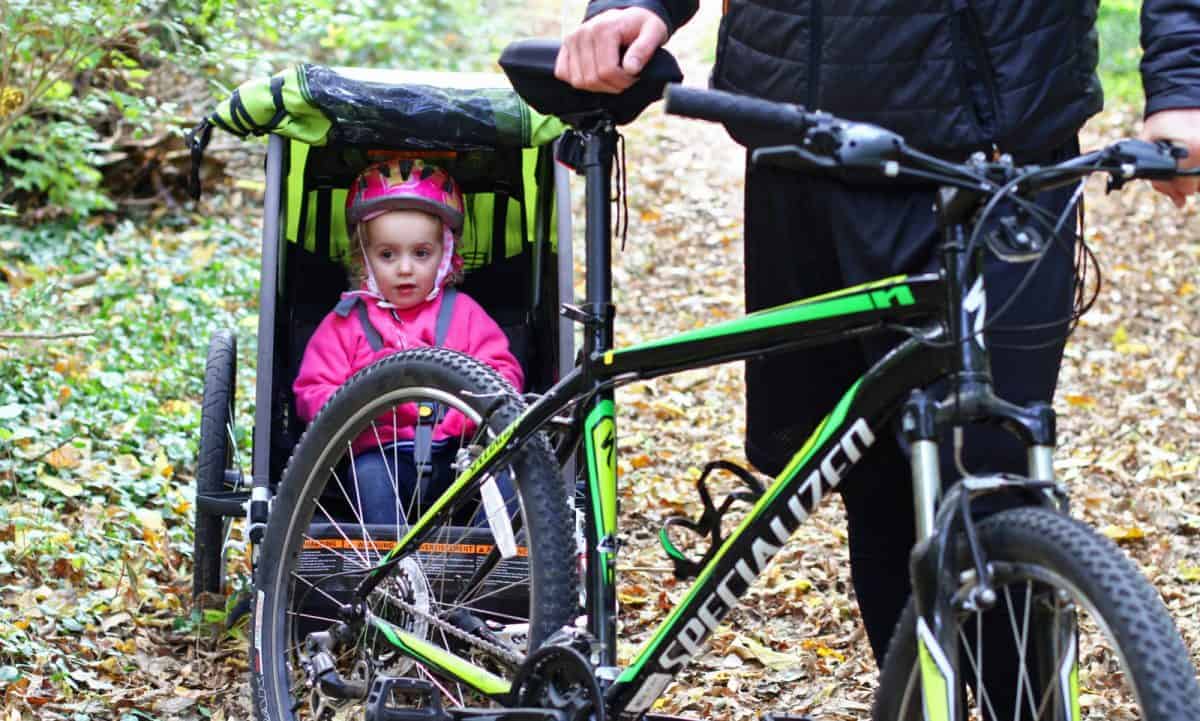
Tips for Biking with Kids
Biking with kids is a fun adventure and a great way to create memories as a family. It’s also a great way to get outdoors, explore new areas/trails and get in shape. However, the thought of biking together as a family can sound intimidating and overwhelming with the amount of gear you need and safety concerns. That’s why we’ve put together this great post with lot of tips, advice and recommendations on how to get started, what to pack, what gear to use and what to expect!
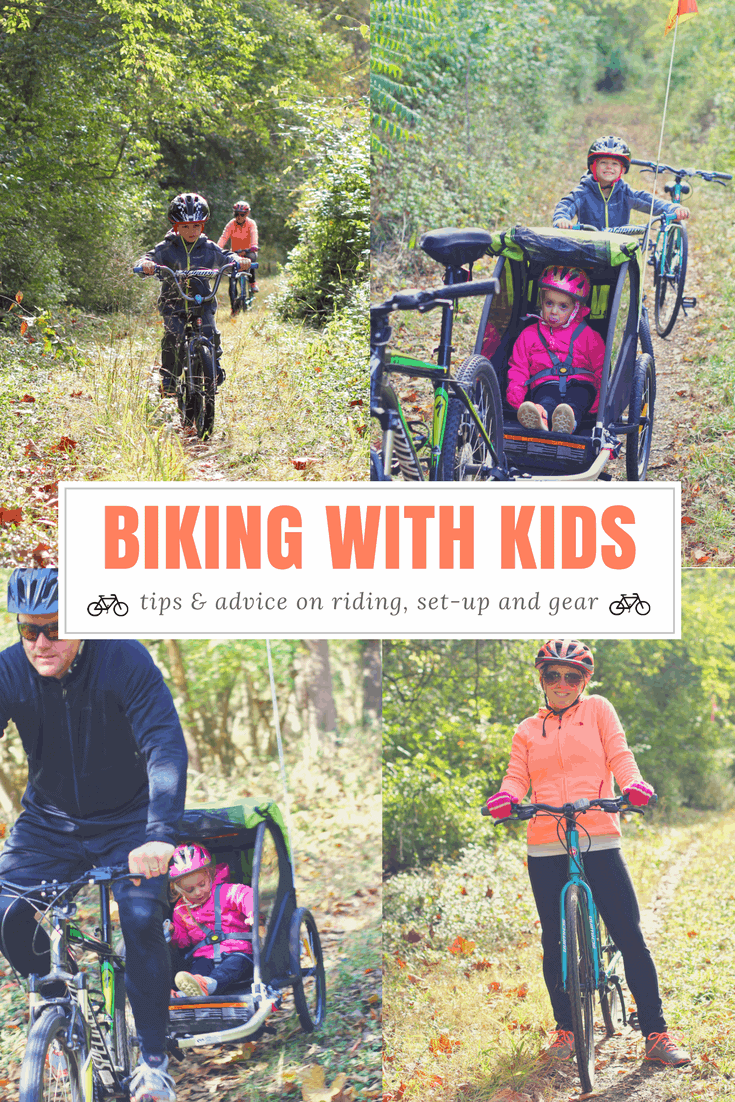
Why bike?
As a fan of (nearly) all things that get kids outside and active, biking is at the top. Learning to ride a bike is an important skill that every child should learn and comes with a range of benefits. While most of us know that regular exercise contributes to better physical health, there are plenty of other reasons why learning to ride a bike is more important than ever. It builds confidence and fosters independence in kids. Riding a bike not only improves physical fitness, it also benefits your child’s learning development and mental health. Plus, using active transport like cycling instead of driving reduces carbon emissions, eases traffic congestion and eliminates parking problems. Less pollution and traffic means our communities will become greener, healthier and less stressful places to live.
Kids that ride bikes connect with their neighborhoods, community and nature in new ways. They get to know the people, geography, and landmarks of their area. Kids who are driven around in cars most of the time aren’t as likely to know their way around in their own neighborhoods. They can also feel less emotionally connected to their communities. Think about it: unlike traveling by car, when you’re on your bike, you can easily stop and smell the roses (literally!). You can stop to play at a park, by a neighbor’s garden for a chat, or at food stand for a bite. Even when you’re zooming along, you’re still going at a pace that allows you to take in the sights and smells. Biking is a full sensory experience.

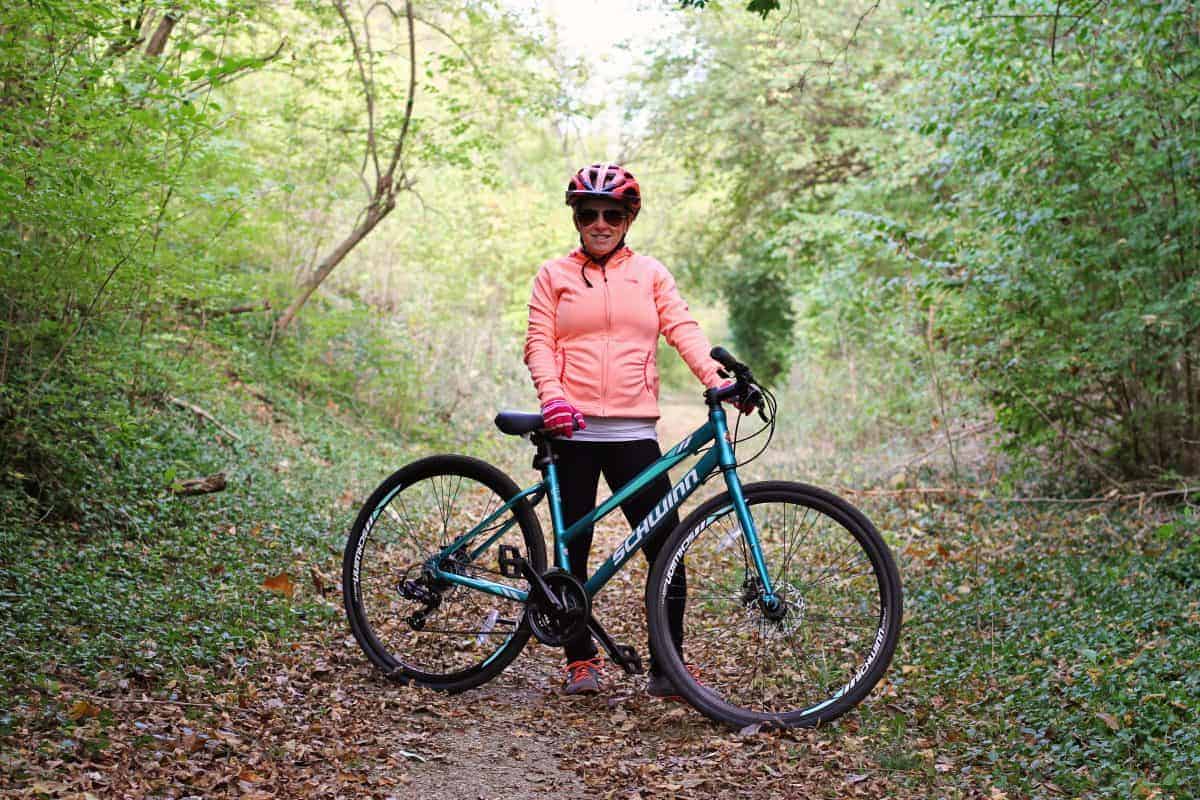
How to choose your biking set-up
Before you can start biking, you’ll need to decide what kind of set-up you want to use for your family. Whether you biked a lot before having kids or just recently thought about biking as a fun way to exercise together and get around, biking with kids is easier than ever these days. There are so many great set-up options for king with kids – individual bikes, bike seats, tow bars, carts, buggies and trailers.
However, all these options can be a bit overwhelming. When making the decision on your biking set-up, you’ll want to consider the following criteria:
- number of kids you have;
- children’s ages;
- kid’s sizes;
- children’s expertise on a bike;
- price of gear;
- weight of gear;
- size and transportability of gear;
- your comfort-level with the different biking options.
Individual bikers
If your kids are old enough to ride their own bike, by all means, give them the chance to learn how to bike with the family. The more experience they get, the better riders they’ll become. My son is five and finally got rid of the training wheels last year. Since then, he’s become pretty proficient at riding his own bike and being independent. He still crashes occasionally, but that’s just part of the learning process. He rides a Schwinn Amplify SmartStart bike, which is the perfect size for him (you can read our gear review on the bike HERE).
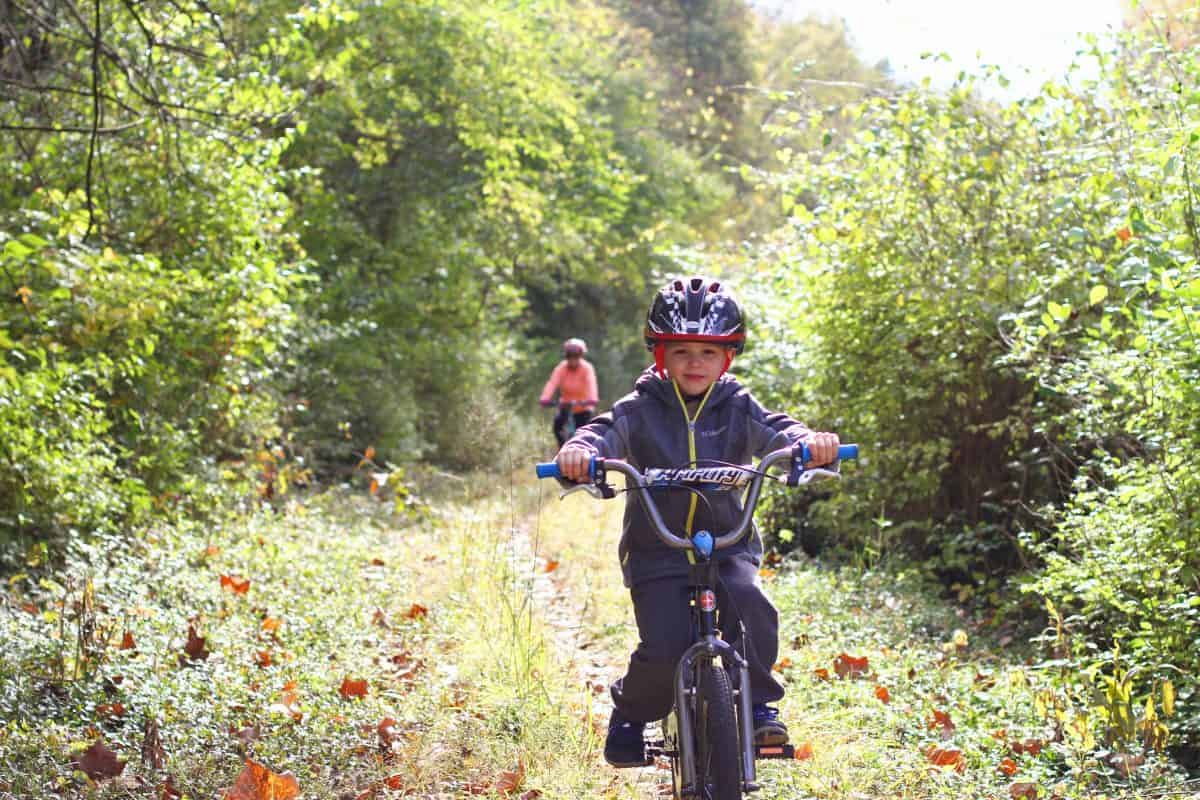
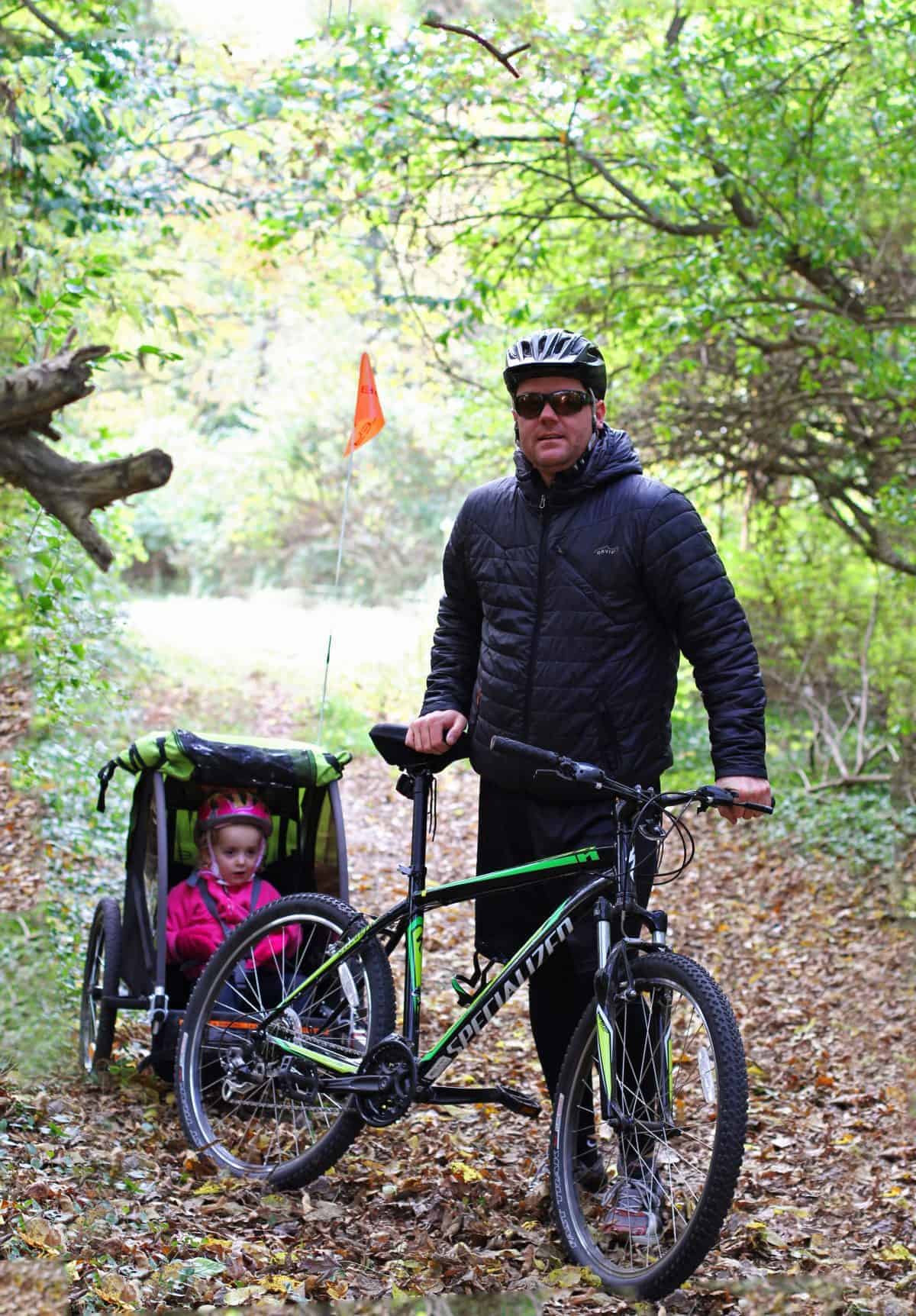
Trailers, tow bars and bike seats
For younger kids and infants, you have a few options: a pull behind trailer, a bike seat, a cargo bike or a tow bar. Obviously, there are pros and cons to each of these set-ups, which you’ll need to consider. It will also depend on the age/size/activity level of the kid and how long you’d like the product to last. Tow bars are great for bigger kids that want to ride their own bike, but they add weight to your set-up and won’t work for small kids and infants. Bike seats are great for small kids, as they’re fully restrained, close to the adult and can even sleep in the seat. It’s also nice to have them close to you so you can talk to and hear them. However, some of these seats don’t give the child much of a view or any freedom to move around.
We chose to get a pull-behind trailer for a couple reasons: (1) our daughter is 3 years-old and big, so she fits much better in a trailer and has her own space; (2) it has an area for cargo, because we never travel lightly; (3) it’s safe, with a full aluminum roll cage and 5-point harness; and (4) we can add a snuggle seat inside for our next baby, starting at age 1. By that time she’ll hopefully be able to ride her own bike. You can get trailers for one or two kids and some even convert into a jogging stroller. Check out our Burly Minnow bike trailer gear review.
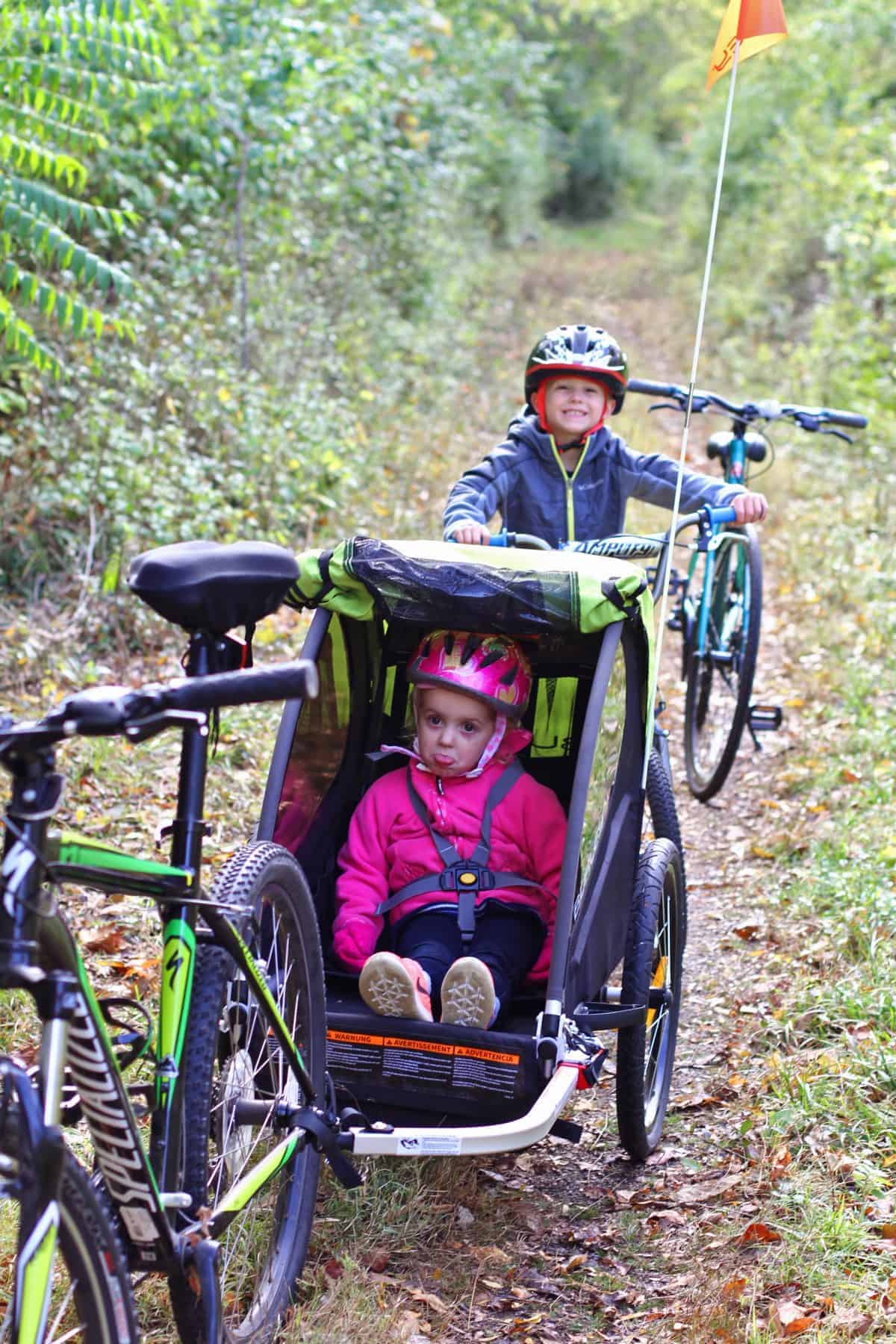
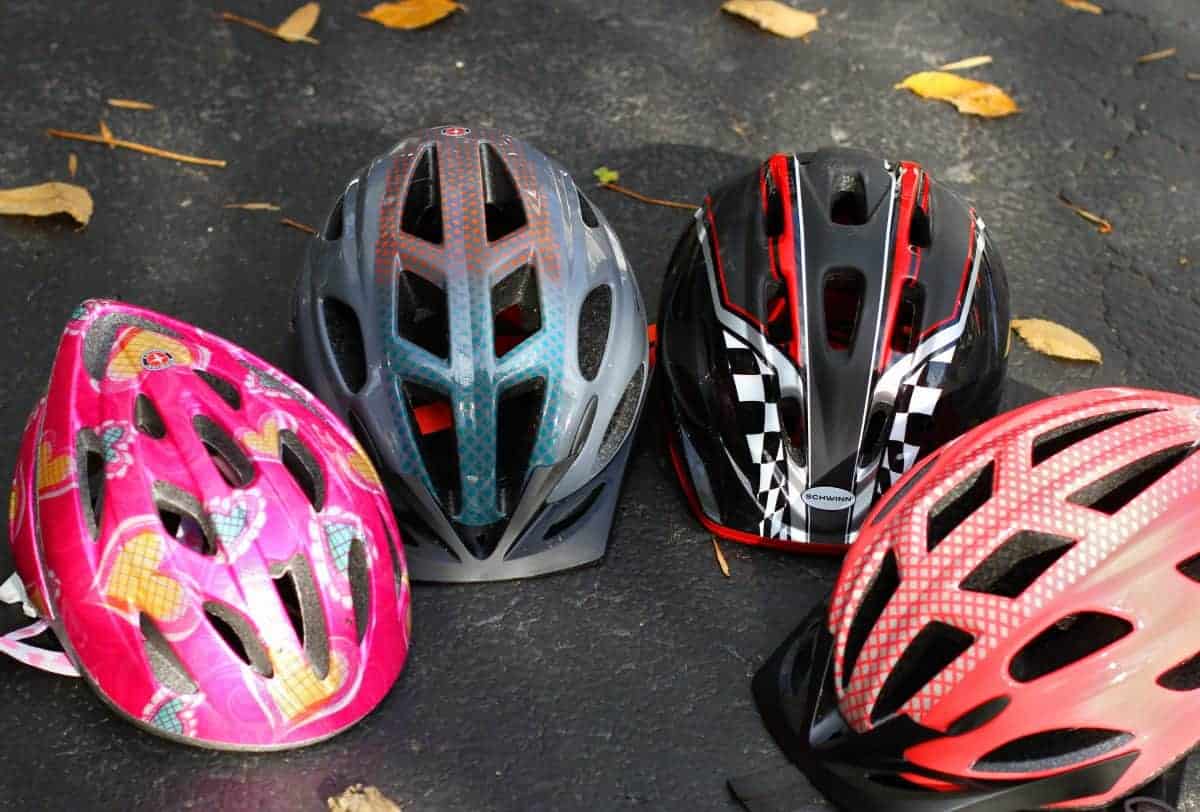
Always wear your helmet
Safety is a top priority when biking with kids, so make sure that everyone wears a helmet at all times when biking (even in a trailer or seat). Helmets should fit snugly around the head and not move or flop around. The chin strap should be tight, but not uncomfortable. Kids grow fast, so make sure you check for fit every time you ride.
If your kids aren’t used to helmets, they might not like wearing them, but make it a rule: no helmet = no bike. Don’t give them an option not to wear one. And the more you bike, the more they will get used to it.
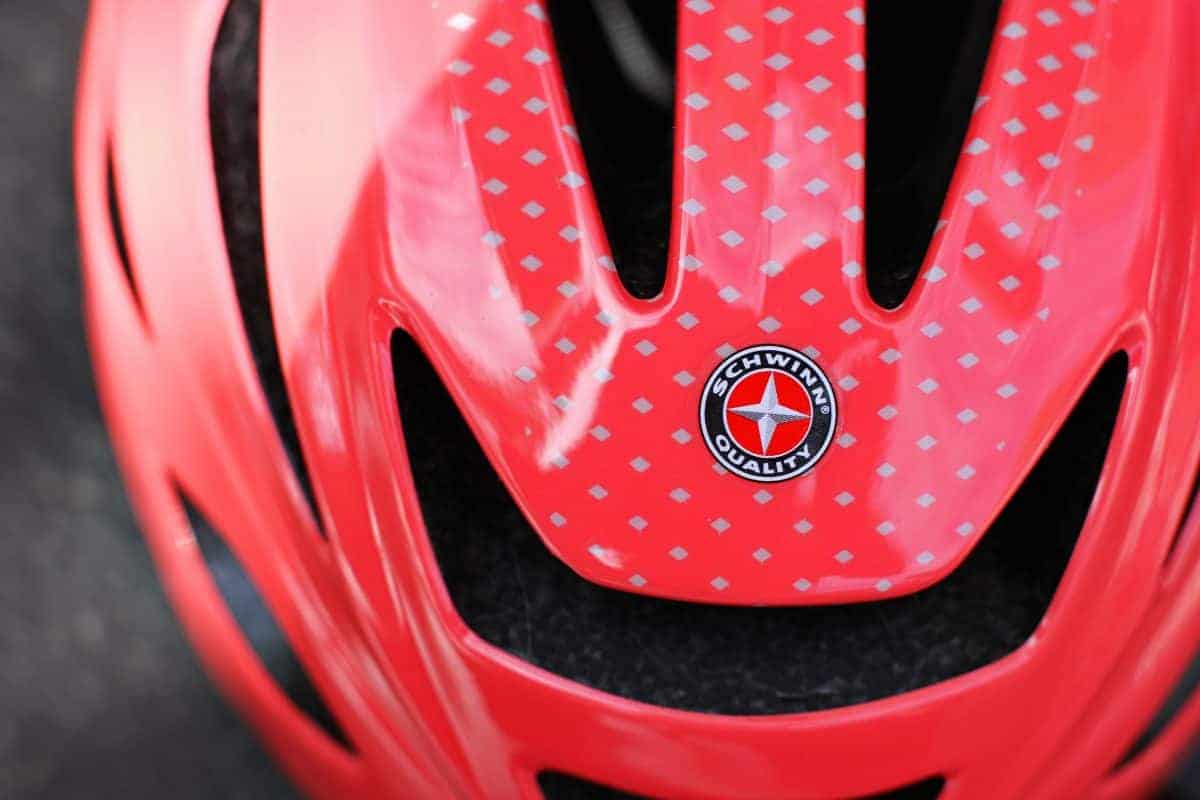
Don’t forget about helmets for mom and dad, too. As parents and protectors, we tend to think about our kids first, but your safely is just as important to your kids. Set a good example by always riding with a helmet and your kids will be more likely to grab theirs every time they go biking.
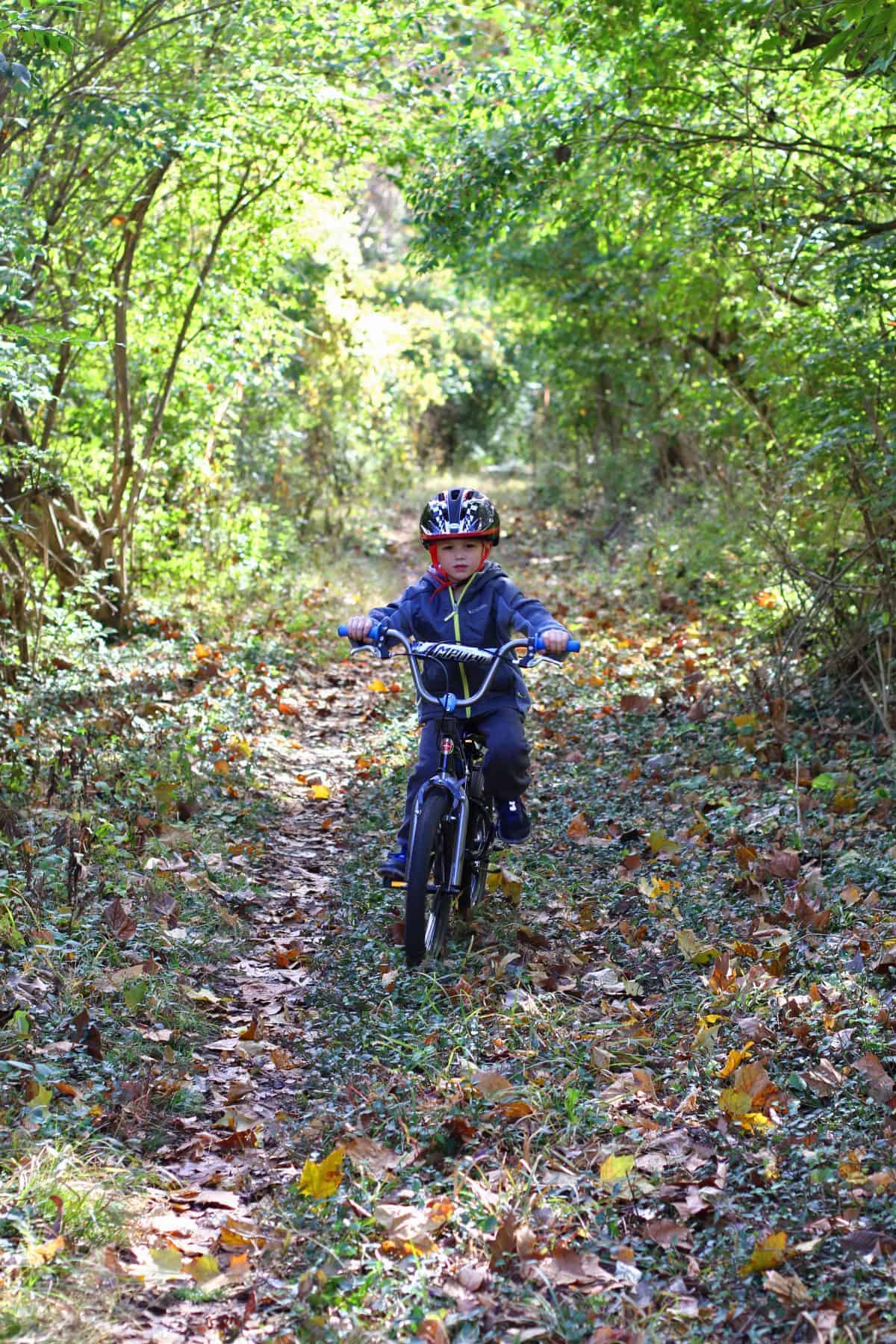
Pick the right location
You’ve heard that “location, location, location” are the three most important things about buying real estate, but choosing the right location is also extremely important in ensuring that you have a safe and enjoyable bike ride with your kids. The right trail or bike path can make the difference between a stressful exhausting ride and an enjoyable one for both you and the kids.
Try to choose a location that’s away from traffic, if possible, for safety and peace of mind. Young riders can be a bit unpredictable so it’s nice knowing they aren’t going to swerve in front of a car if they lose control of their bike. Lots of local parks have bike trails free from cars and trucks.

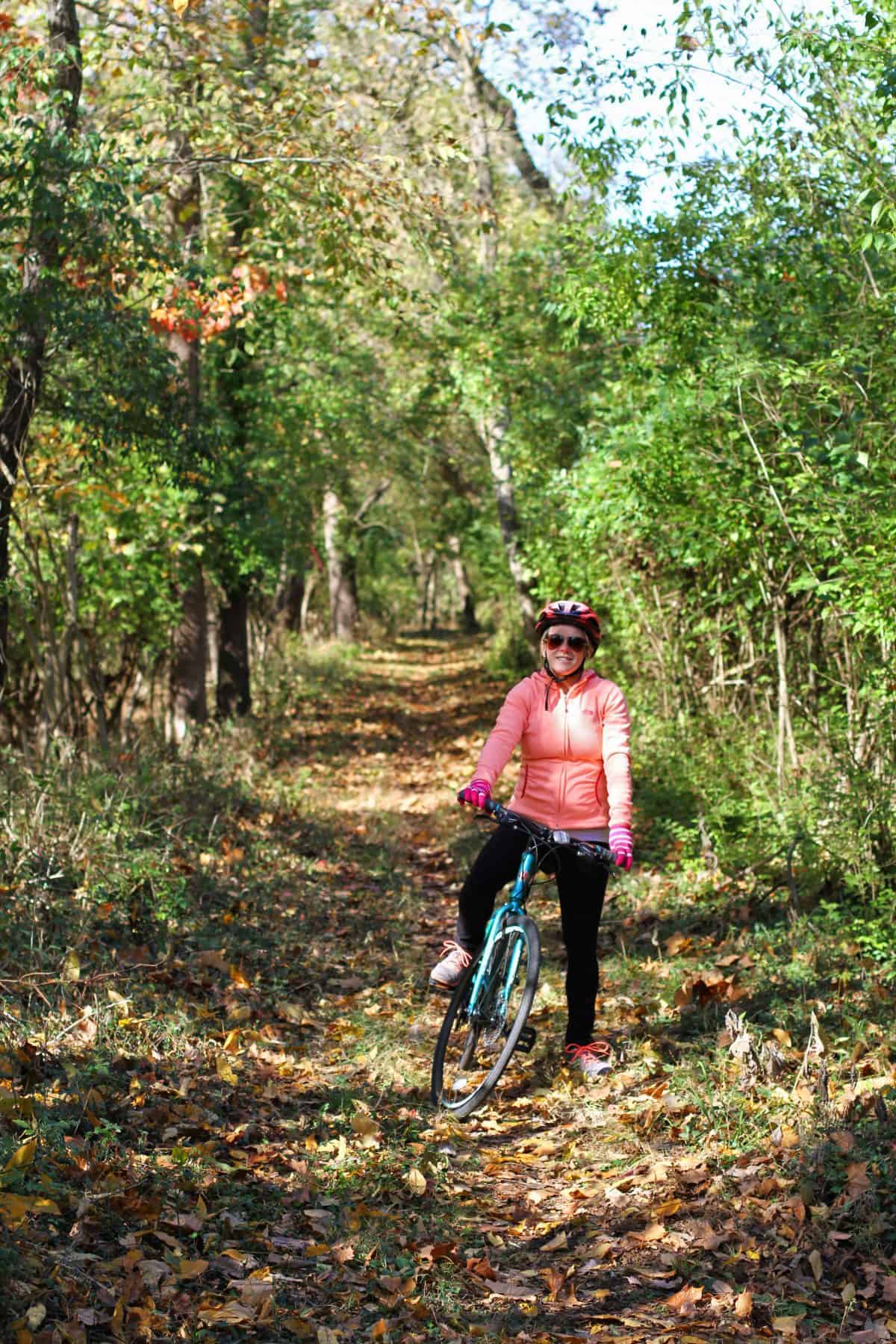
Depending on your bike and tires, paved trails will be easier for beginners. Flat trails are ideal for young riders and anyone pulling a trailer. Once the kids get older and can go longer distances, you can add more challenging trails with hills, gravel, off-roading and other exciting features.
To find great trails in your area, do some research. Most parks have trail maps and information online. Lots of cities/towns have designated biking lanes on certain streets to get you to and from bike trails safely. Ask friends or local mom groups for suggestions.
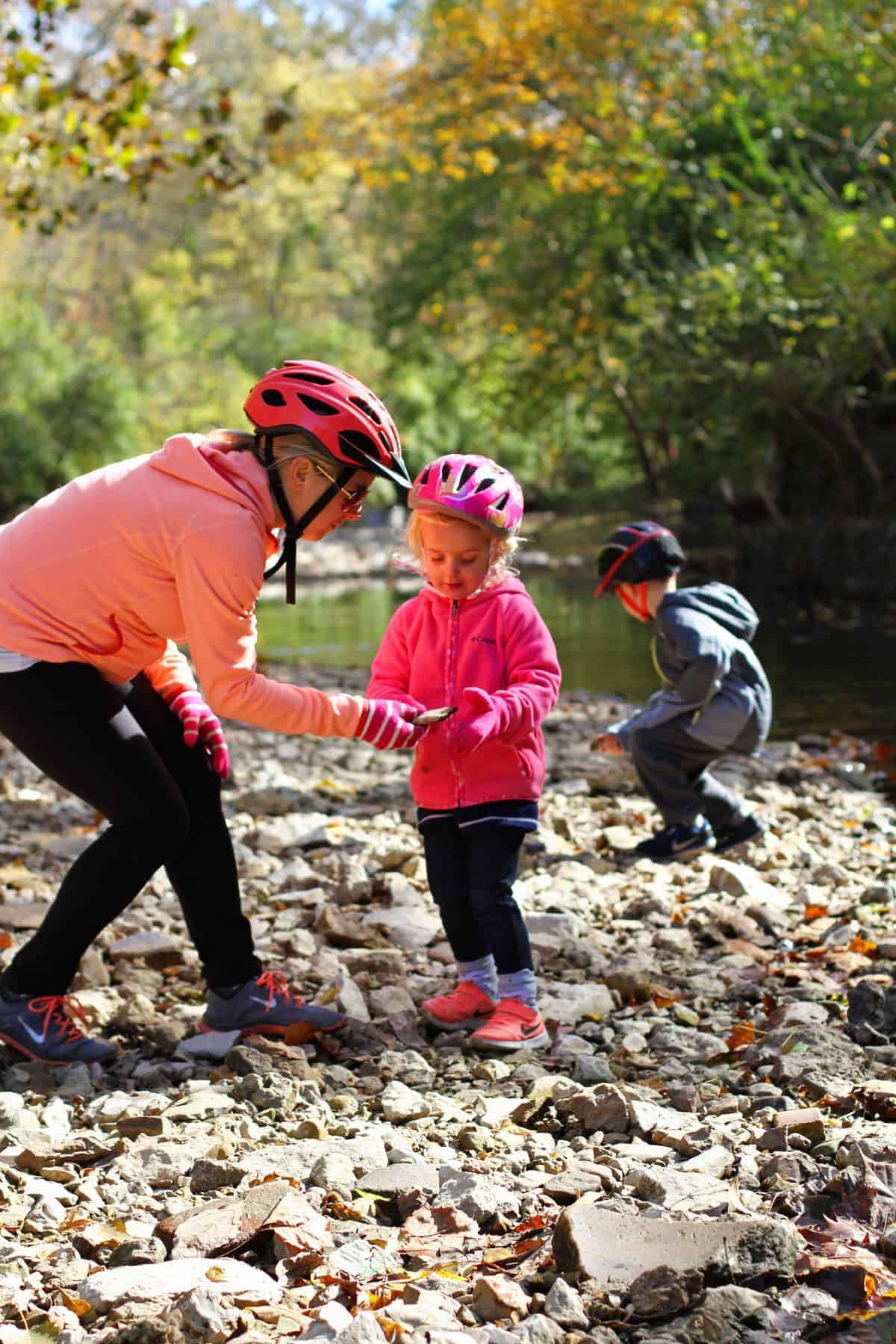

Have a destination in mind
Kids do much better riding and staying focused when they have a goal, so choose a route with a specific destination. Make it a park, an ice cream shop, a restaurant, picnic location or even just a landmark that lets them know they’ve reached their goal. Bonus points if the destination has a playground, food or treats! Our favorite bike trail leads us right to a beautiful little creek, where we can stop, play and throw rocks for a while before getting back on the bikes to head home.
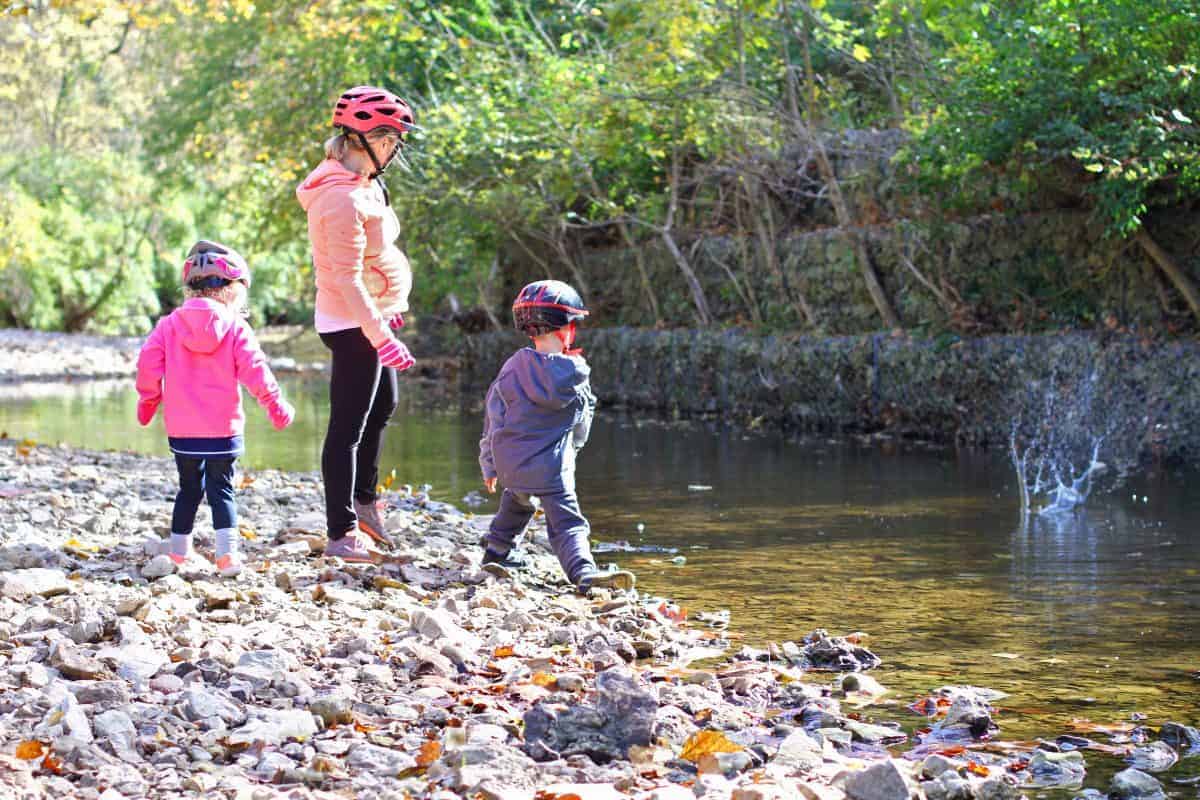

Keep older kids in between adults
If you are riding with kids who are riding their own bike, the safest option is to put them in between two adults. One adult rides in front and one behind. Having someone to follow ensures that your kids stay on the right track, stop when they’re supposed to and don’t get too far ahead of everyone else. Having an adult in the back also ensures no stragglers get left behind.
If you have more than one kid riding independently, form a duck line. Either Mama Duck or Daddy Duck up front, and then the youngest solo rider to the oldest, single file behind the leader. The other parent (or oldest child) is in the back. No one breaks the duck line until the leader gives the all clear, which will give the first and last rider time to check for cars. Your kids may need practice both getting into the duck line without panicking and not flying so close together that they’ll all crash if someone stops. It takes practice, but it’s worth it for the safety.
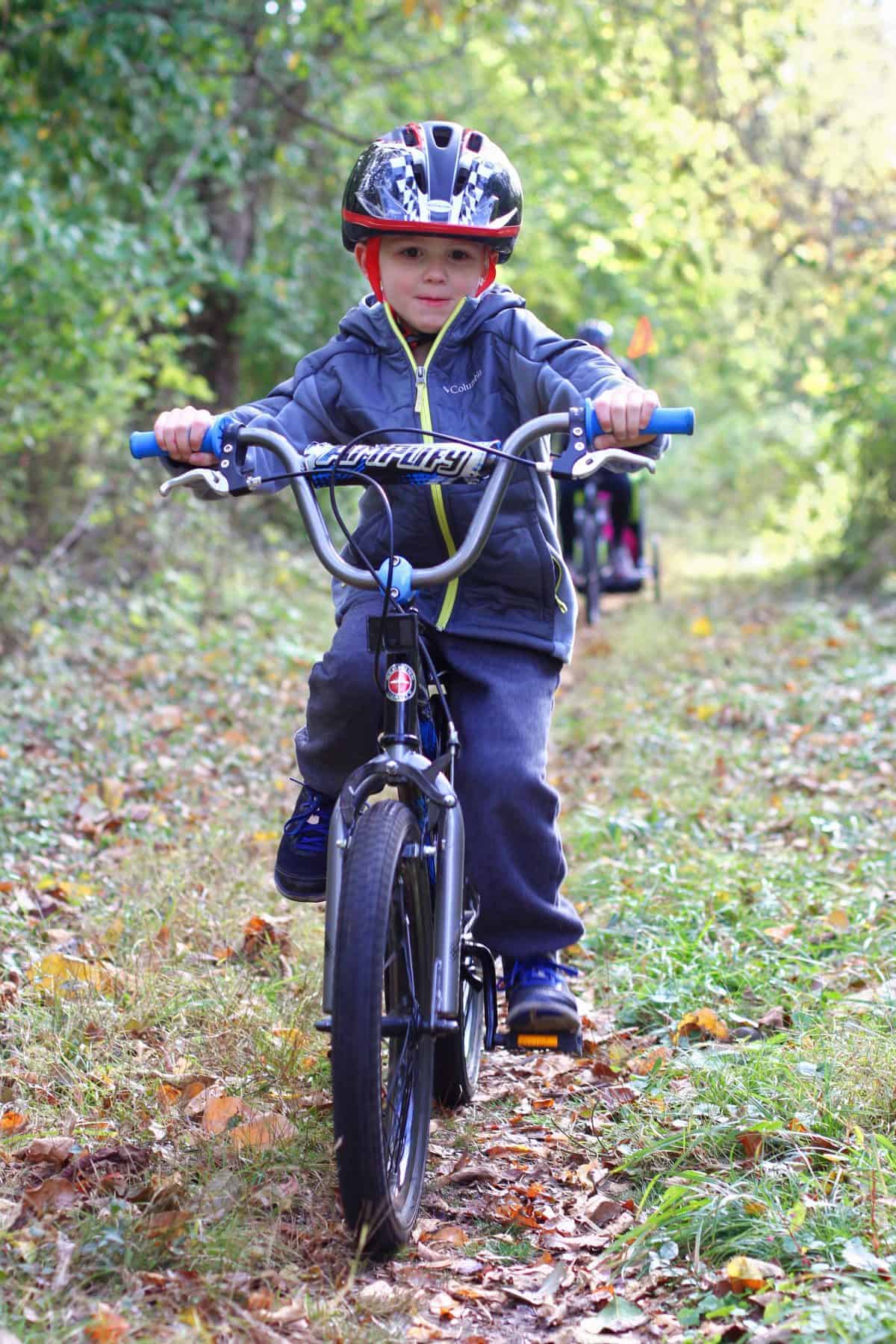
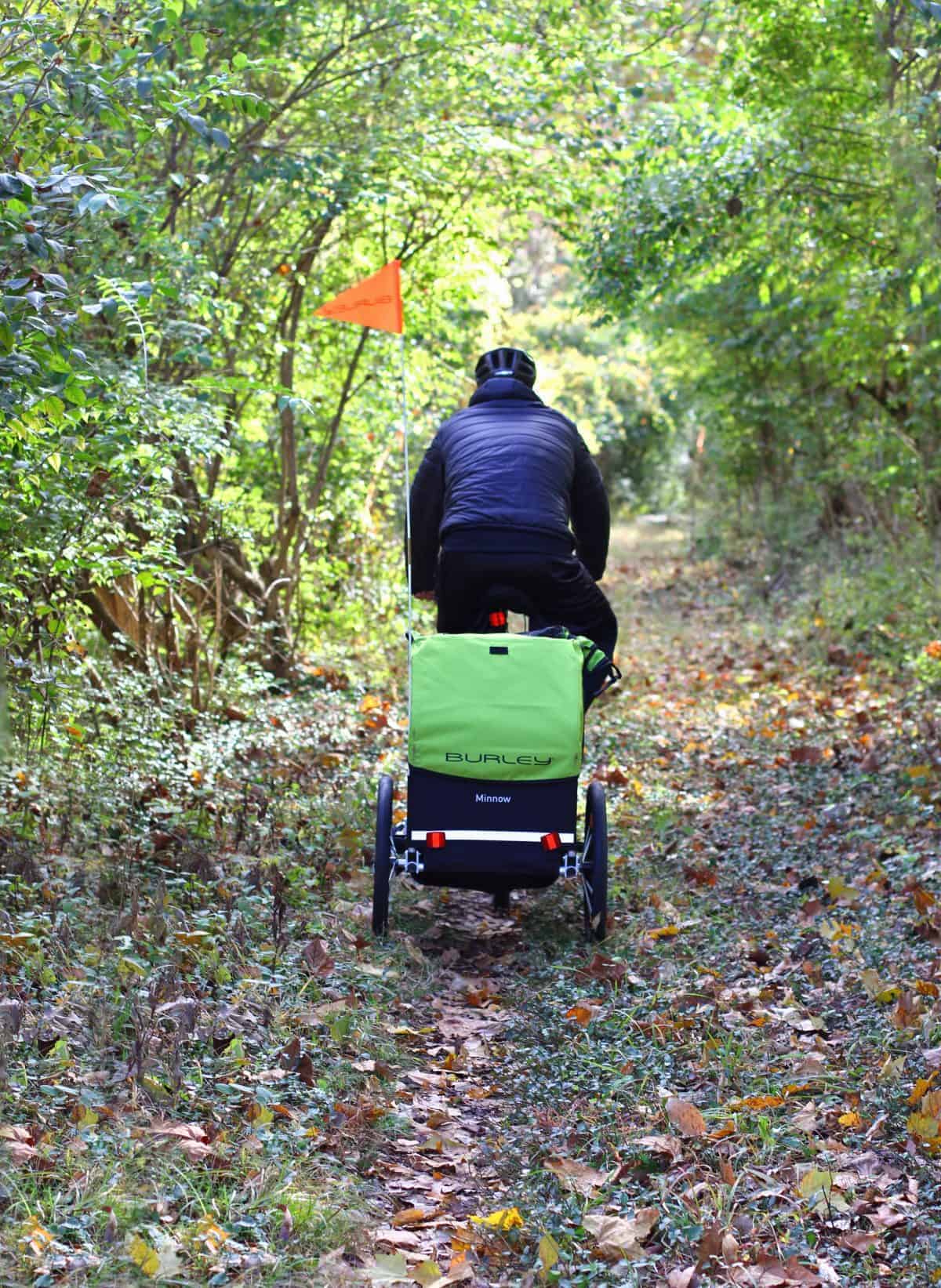
Be prepared
In addition to making sure your bikes are maintained and in well-working order, you’ll also want to be sure to dress your kids accordingly for the weather and conditions. Be sure they wear appropriate footwear so they don’t get blisters. Hats, sunglasses, sunscreen if it’s sunny. Feed them before the ride so they’re not tired, cranky and hungry.
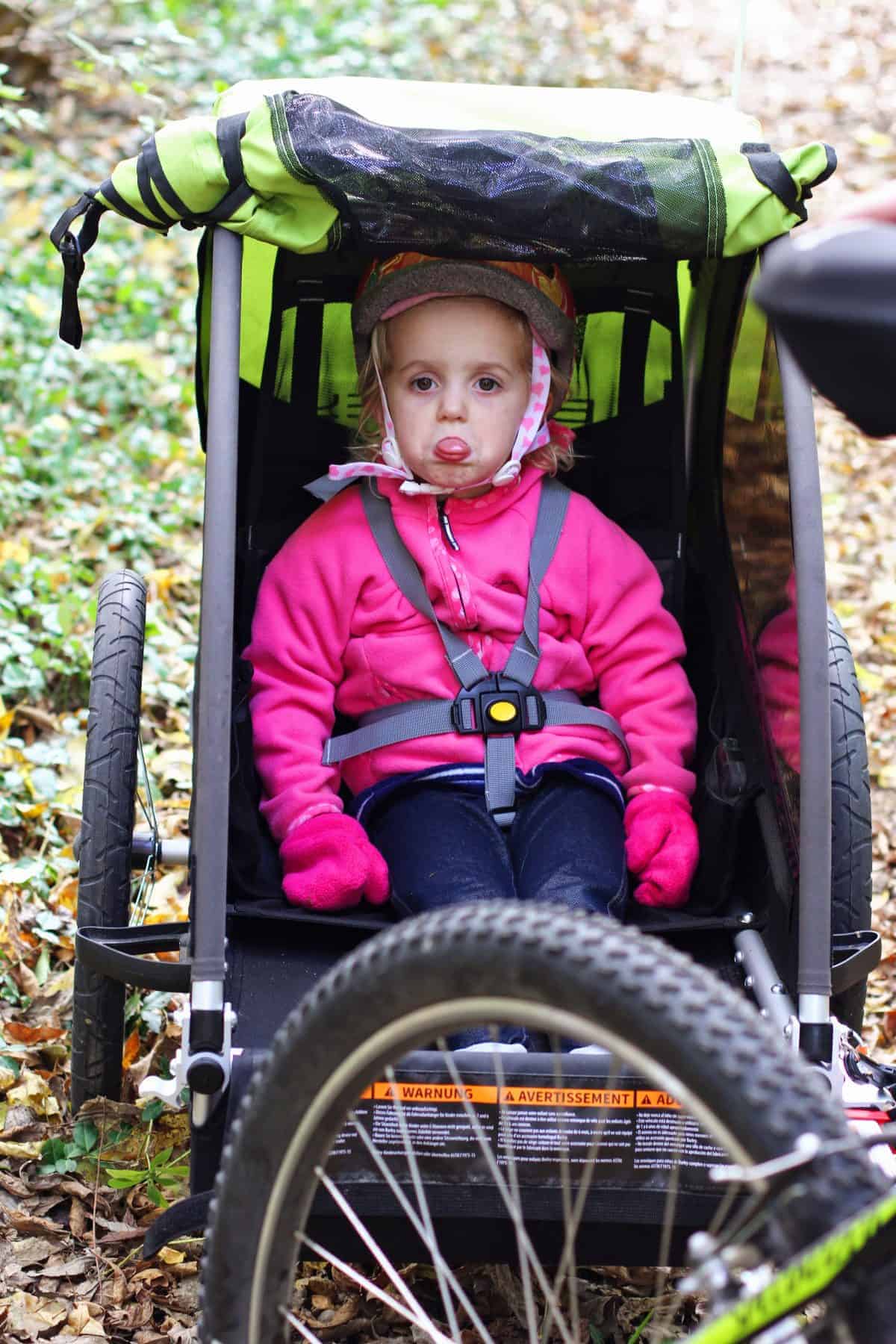
As with any outdoor adventure, getting prepped ahead of time is half the battle. Biking trips are no different; although the gear and supplies you pack might vary a bit from a regular outing. Here are few things we recommend you bring along on your next biking outing:
- water (use a Camelbak backpack or individual water bottles w/ holders)
- biking tool kit with spare tube and tire patch
- air pump
- multitool
- bike lock
- first aid kit
- sunscreen
- cellphone
- snacks
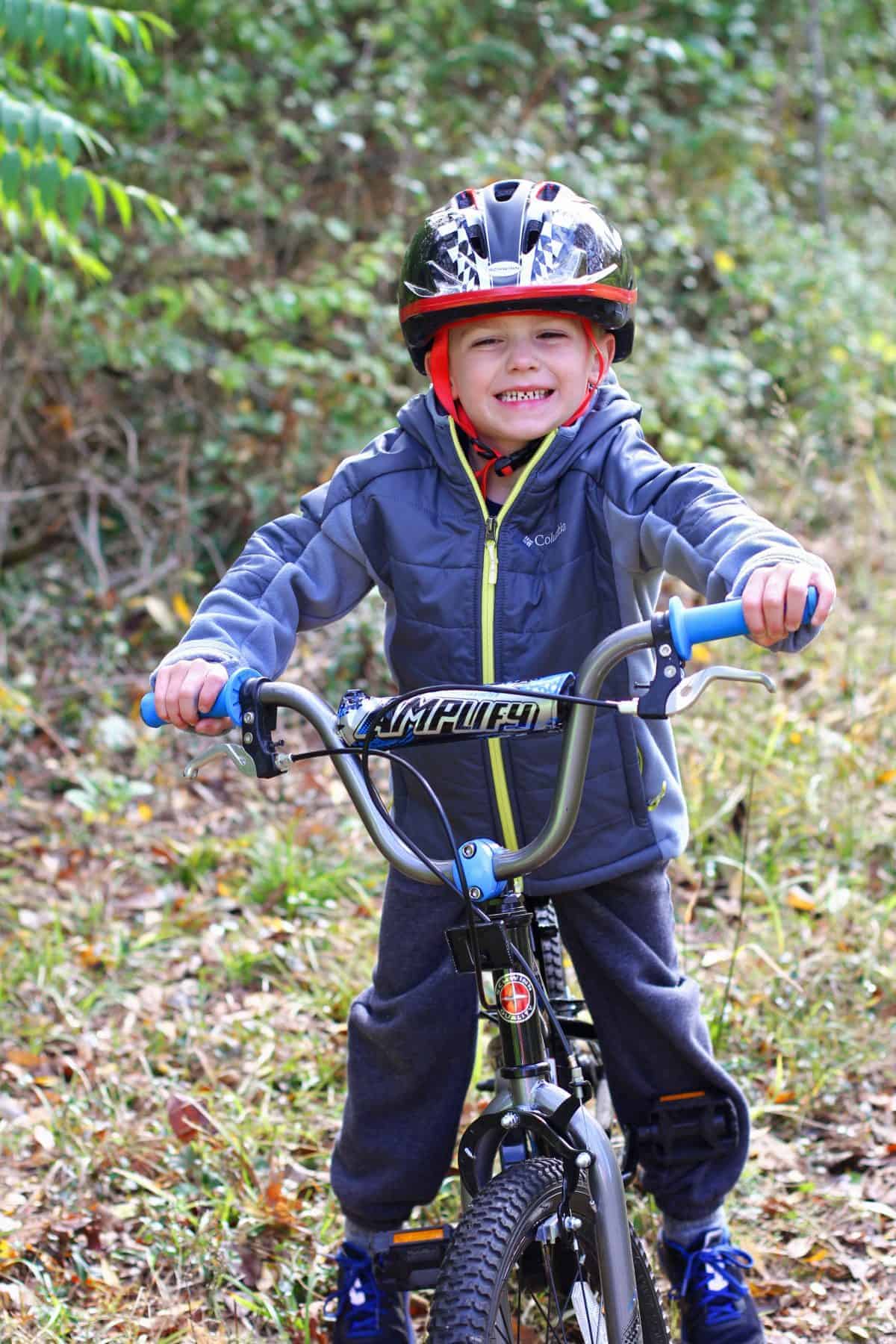
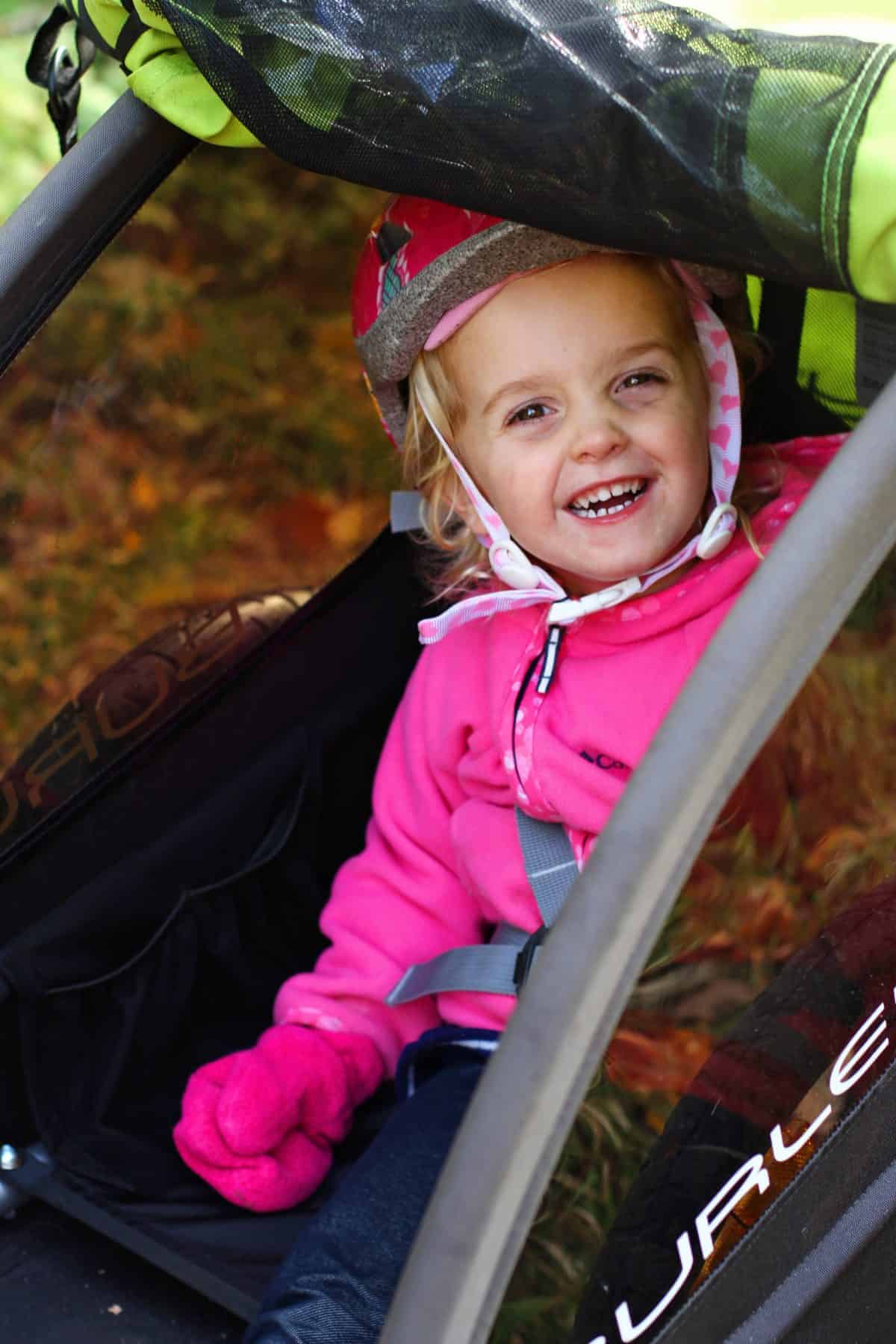
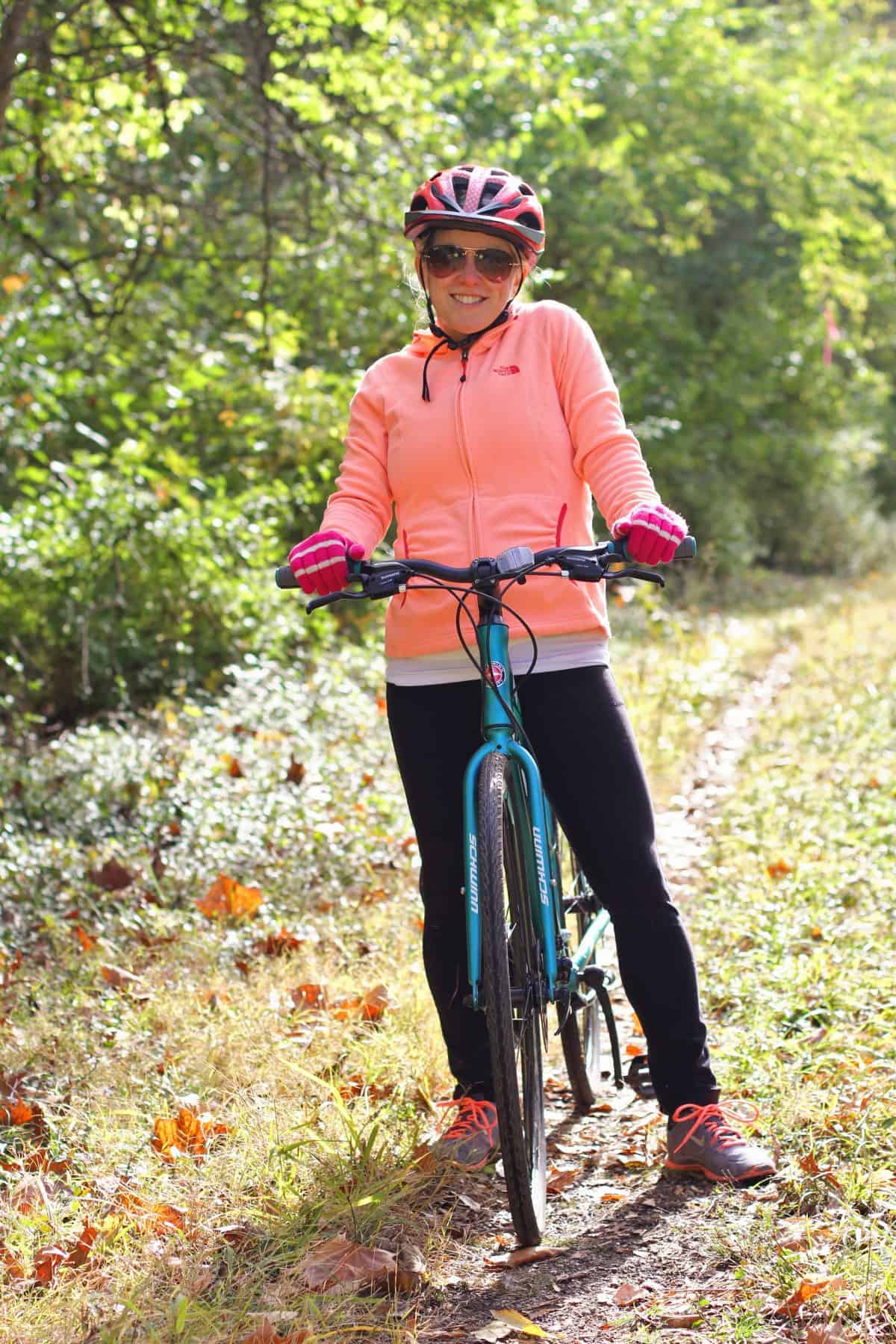
I hope these tips encourage you to get out and bike with your kids soon!
Comments
5 responses to “Tips for Biking with Kids”
-
[…] Biking with kids is a fun summertime adventure and a great way to get outdoors, explore new areas/trails, create family memories and get in shape. Riding a bike not only improves physical fitness, but it also benefits your child’s learning development and mental health. Plus, biking reduces carbon emissions, eases traffic congestion and eliminates parking problems. If you’re just getting started, we’ve got a great post with lots of tips for biking with kids. […]
-
[…] 11. Go for a bike ride – Now that the weather is cooling off, consider going on a long bike ride with the kids. Fall is the perfect time to explore a new bike trail or make a day-trip out of a favorite. Pack a picnic lunch or find a trail with a restaurant along the way. Riding a bike not only improves physical fitness, but it also benefits your child’s learning development and mental health. Plus, biking reduces carbon emissions and eases traffic congestion. If you’re just getting started, we’ve got a great post with lots of tips for biking with kids. […]
-
[…] The weather is still nice enough for long outdoor afternoons and Fall is the perfect time to explore a new bike trail. Riding a bike not only improves physical fitness, but it also benefits your child’s learning development and mental health. Credit to Run Wild My Child blog for some great tips for biking with kids. […]
-
[…] Go for a family bike ride […]
-
Wonderful and helpful article! I appreciate the beautiful pictures and your commitment to family. Thank you for putting this information together like you did.

Leave a Reply